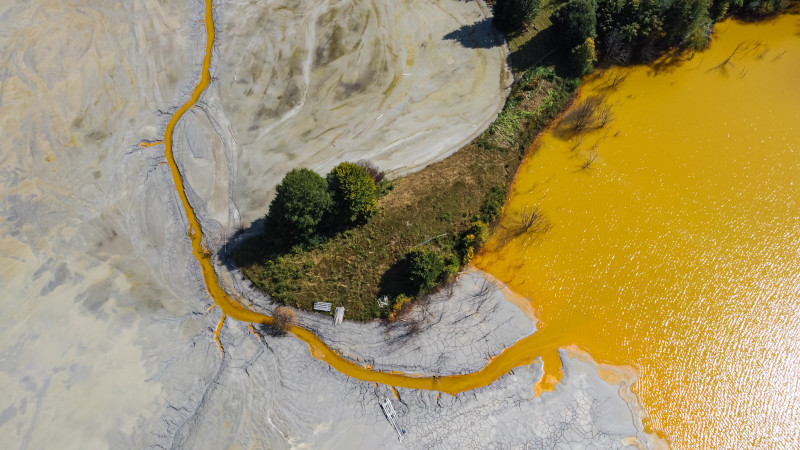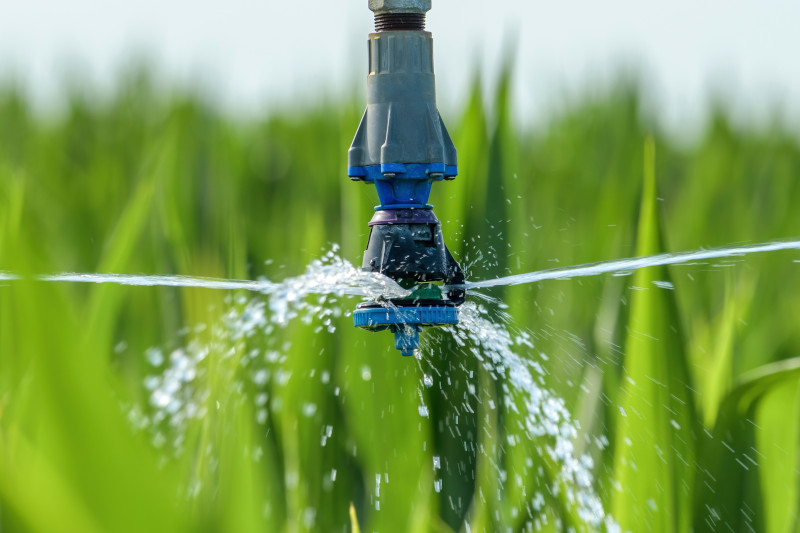Capitalising on local innovation to turn waste into resources
South Africa's mining legacy has left a significant environmental footprint, with Acid Mine Drainage (AMD) emerging as one of the most critical challenges. However, the Department of Science and Innovation (DSI), together with our partners, is at the forefront of developing groundbreaking solutions that not only mitigate the impacts of Acid Mine Drainage (AMD) but also pave the way for a more sustainable and circular economy in the country.
Through collaborative efforts with researchers, academic institutions, and industry partners, the Department of Science and Innovation (DSI) is fostering innovative approaches to valorise Acid Mine Drainage (AMD), extract valuable resources and create economic opportunities while minimising environmental harm.


Acid Mine Drainage (AMD) - a critical environmental challenge
Acid Mine Drainage (AMD) poses a significant environmental challenge in South Africa and globally. It is a persistent pollutant resulting from current and historical mining activities. Acid Mine Drainage (AMD) presents risks for operational mines, abandoned sites, mine shafts, open pits, waste rock piles and tailings dams.
While active mines can control water levels through pumping, abandoned mines with no pumping allow the water table to rise, exacerbating Acid Mine Drainage (AMD) issues. Besides environmental damage, Acid Mine Drainage (AMD) impacts sustainability across environmental, social and economic dimensions. It can deplete natural resources, disrupt economic activities, degrade infrastructure and threaten livelihoods in affected communities.
Acid Mine Drainage (AMD) hinders developing countries' efforts to transition to green economies and meet climate change commitments. Innovative, effective and affordable Acid Mine Drainage (AMD) management approaches are urgently needed. In South Africa, Acid Mine Drainage (AMD) from gold mine tailings dams is one of the most pressing environmental and socio-economic challenges requiring solutions.
Source

Innovative technology for Acid Mine Drainage (AMD) valorisation
In the wake of intensive mining, Acid Mine Drainage (AMD) generation has been a prime concern for scientific and water management communities worldwide. Acid Mine Drainage (AMD) is characterised by elevated levels of aluminium, iron, manganese, sulphates and other contaminants. However, this composition also makes Acid Mine Drainage (AMD) a potential source of valuable metals and minerals.
Recent research has focused on recovering metals and minerals from Acid Mine Drainage (AMD) to advance the circular economy and comply with stringent environmental regulations. Innovative approaches aim to beneficiate Acid Mine Drainage (AMD) by extracting valuable components and synthesising useful materials with diverse industrial applications.
Laboratory, pilot and industrial-scale technologies have been explored for Acid Mine Drainage (AMD) treatment with value recovery and material synthesis. While various treatment methods exist, the complex and heterogeneous nature of secondary sludge byproducts necessitates innovative valorisation approaches aligned with circular economy principles.
The Department of Science and Innovation (DSI) is working hard to establish sustainable and economically viable Acid Mine Drainage (AMD) treatment strategies for South Africa. These initiatives emphasise clean water reclamation, reuse and resource recovery from Acid Mine Drainage (AMD) streams.
Source

UNISA's elegant, low-cost, no-sludge solution for converting Acid Mine Drainage (AMD) into reusable water
Effective management of Acid Mine Drainage (AMD) is crucial for preserving water quality and safeguarding South Africa’s food chain. Failure to adequately treat Acid Mine Drainage (AMD) can lead to the release of heavy metals from mines into water systems, posing serious environmental and health risks.
While conventional Acid Mine Drainage (AMD) treatment methods using alkaline industrial chemicals and limestone are common, they generate residual sludge that requires disposal in landfills, further harming the environment. The University of South Africa (UNISA) has developed an innovative solution called the NanoMaghä process, which addresses these limitations.
The NanoMaghä process utilises maghemite nanoparticles at pH levels below 5 to remove sulphates, manganese, copper, nickel, cobalt and zinc ions from Acid Mine Drainage (AMD). This approach combines adsorption and precipitation processes, achieving high removal efficiency for metals and sulphates.
The key benefits of the NanoMaghä process include:
- Fewer chemicals required, making it more cost-effective
- No residual sludge generation, minimising environmental impact
- Recovery of valuable usable water resources from Acid Mine Drainage (AMD) for agricultural irrigation, addressing water scarcity
Overall, the method not only makes use of fewer chemicals, reducing costs but also recovers valuable water resources, which can be used in agriculture, contributing to the alleviation of water scarcity in South Africa.
The University of South Africa (UNISA) offers licensing opportunities for this innovative technology, enabling industry partners to access and implement this sustainable Acid Mine Drainage (AMD) treatment solution.

Making contaminated mine water safe for local communities
The country is facing a water scarcity crisis exacerbated by climate change and declining rainfall, particularly in the south-western regions. Rising temperatures due to climate change further strain water resources needed for human populations and the environment.
In response, Boitumelo Nkatlo, an innovator and chemical engineering graduate from the University of Johannesburg (UJ), has developed a solution to purify acid mine drainage (AMD) water. Acid Mine Drainage (AMD) is the runoff produced when water interacts with exposed rocks in mines, leading to the formation of sulphuric acid and dissolved iron, contaminating the water.
Nkatlo, the founder of BN Aqua Solutions and member of the Scaling Out for Impact (SOFI) programme, has established a water treatment plant at the Council for Scientific and Industrial Research (CSIR). The plant, based on Nkatlo's patented technology licensed from the University of Johannesburg (UJ), purifies acidic mine water, making it suitable for drinking and irrigation purposes.
Nkatlo states, “This collaborative innovation is improving food security by providing a safe source of water for crops and livestock. The treated water can be used in low income communities, for drinking and irrigation or agricultural purposes in order to increase our food security."
Source

How to access local innovation and compete in the circular economy
In partnership with the University of South Africa (UNISA), the Department of Science and Innovation (DSI) hopes to promote local circular technology innovations focused on zero-waste manufacturing and conversion technologies. These innovations aim to transform harmful Acid Mine Drainage (AMD) into reusable water for irrigation purposes.
This initiative contributes to South Africa's transition towards a circular economy, reducing environmental impact and supporting local communities. By embracing these cutting-edge solutions, businesses and industries can position themselves as leaders in the circular economy while driving sustainability and unlocking new economic opportunities.
To learn more about these innovations, including the valorisation of Acid Mine Drainage (AMD) streams, membrane-based treatment technologies and collaborative research efforts, visit innovationbridge.info.
DSI, making sure it’s possible.

